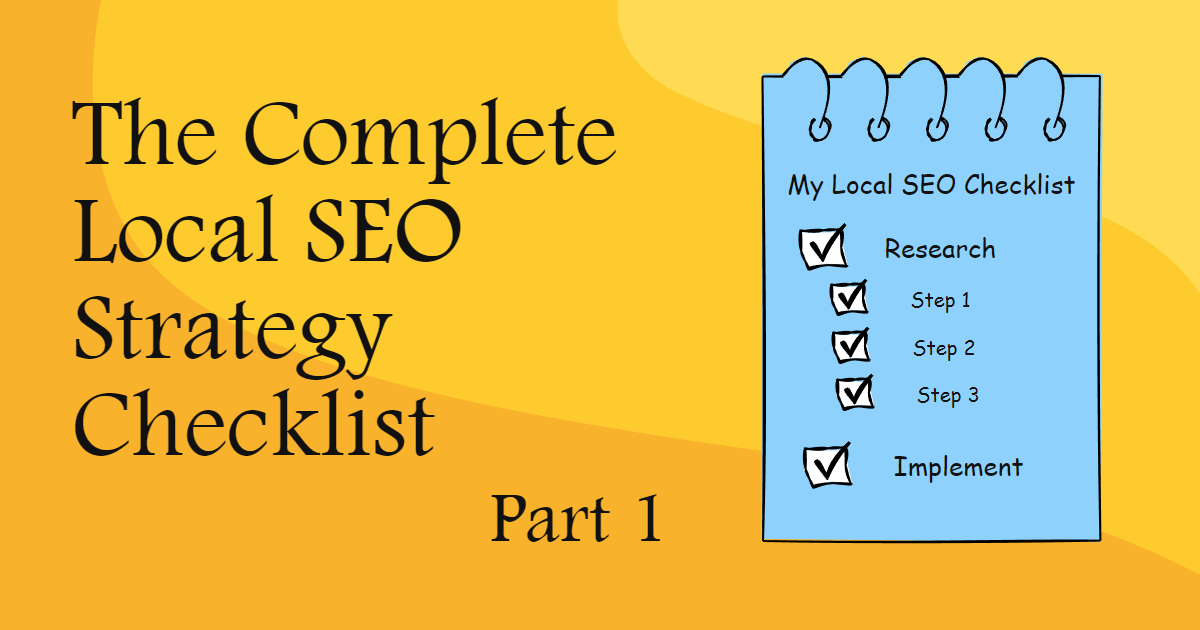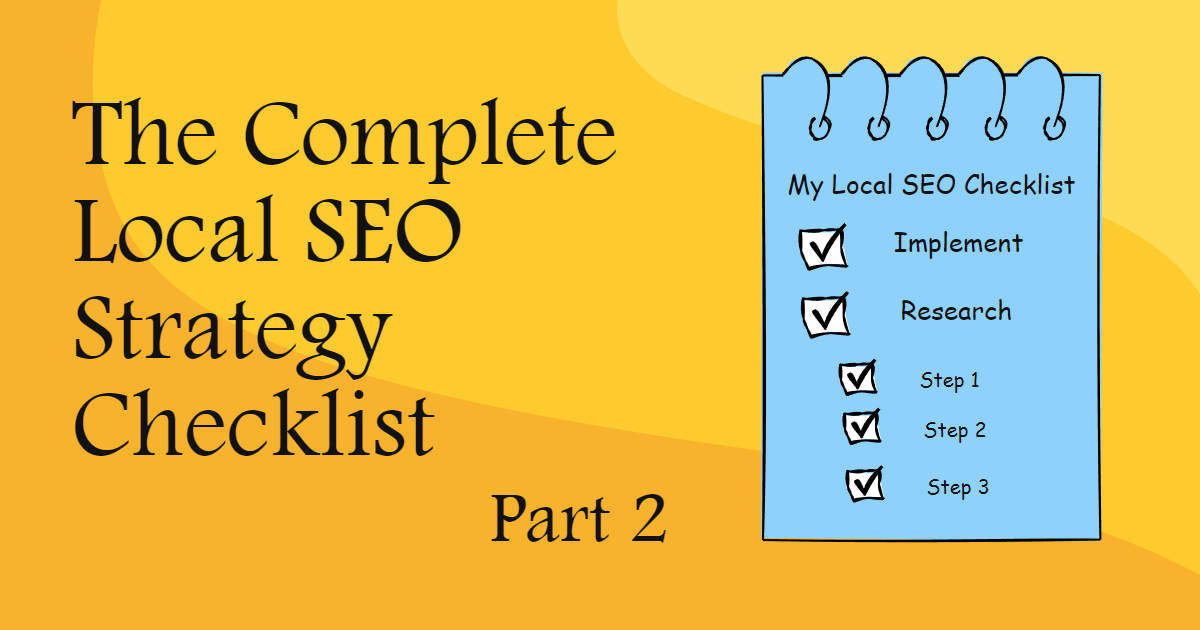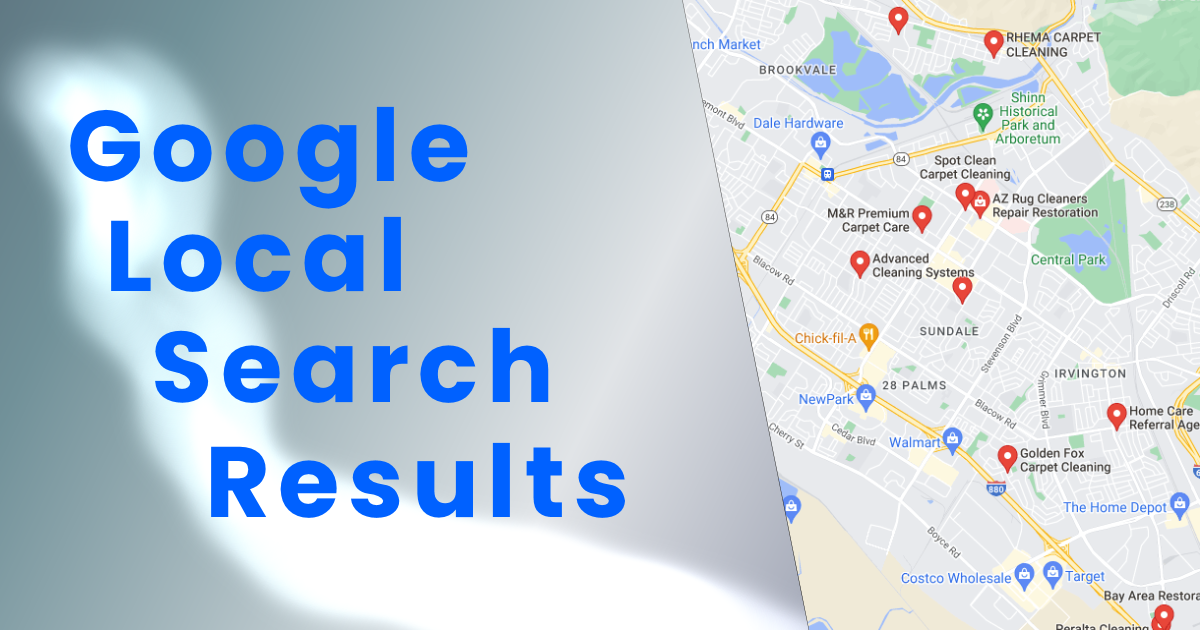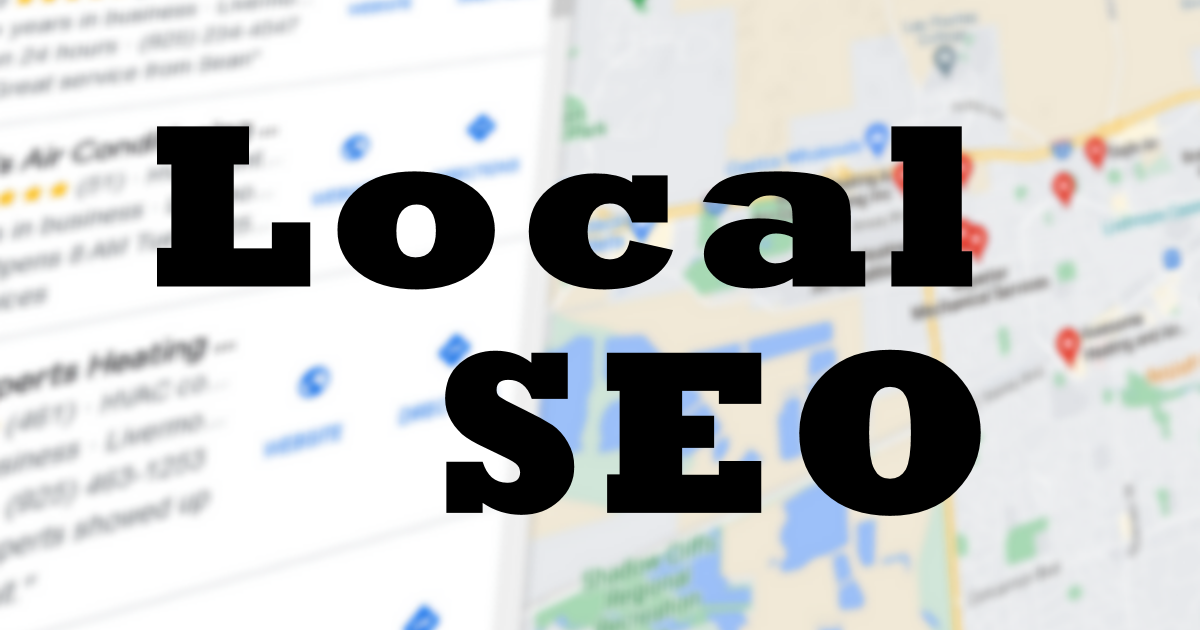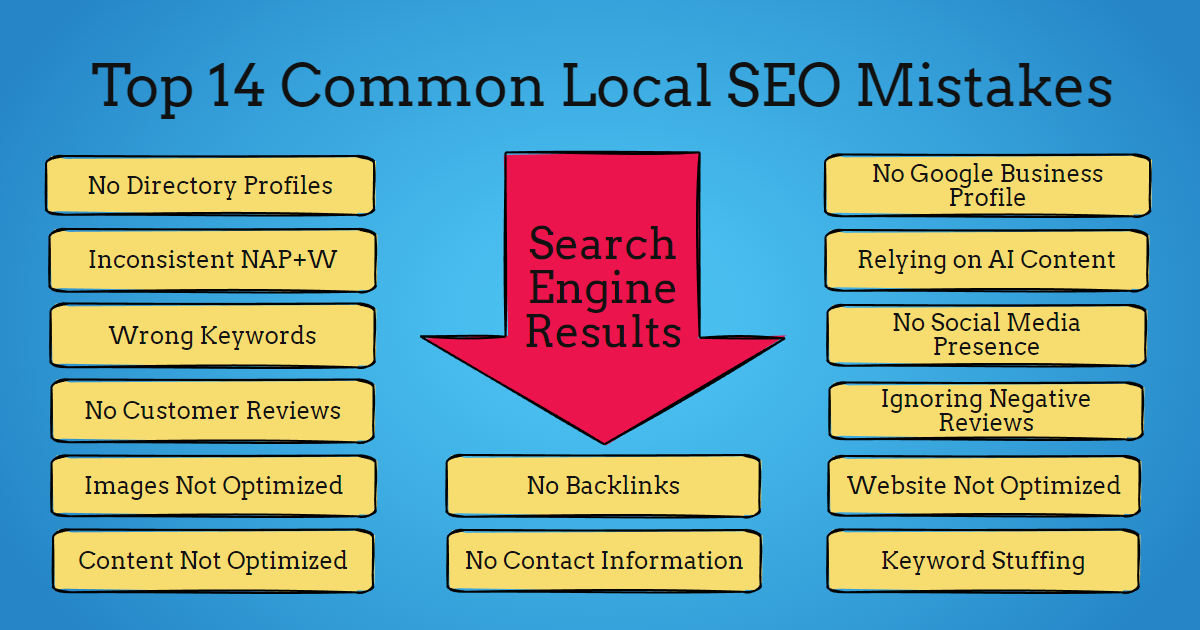This is the third article in the series: “Unlock the Door to New Customers with Local SEO”
So far in this series or articles we have discussed What is Local SEO and Why it is Important for your business. We went on to discuss Google Search Results – What You Need to Know about the Google Map Pack and how search results are ranked. Now we are going to talk about the local seo strategy checklist how you make your business stand out and achieve higher search engine rankings.
There are two major types of tasks that go into your local SEO strategy: research and implementation. You need to complete some research and be armed with the correct data before you can properly implement your plan. Failure to collect the information you need first will hinder your implementation and could potentially lead to some critical mistakes. Take the time to do it right. For a business with multiple locations, each location needs to be optimized using these same steps.
Research
In this first part, we will be discussing the tasks you should follow to complete the research portion of your checklist. Gathering the proper data and arming yourself with the information you need to start your local SEO strategy is the first step.
The better the information you have to work with, the better your results will be. It can take a professional SEO specialist a few days and possibly up to a week to gather all the information needed.
1. Define Your Ideal Customer
Most business owners would define the target customer as anyone who needs my service. That may be ok, but if you really want to create a successful local SEO strategy and marketing campaign, you really need to define what your ideal client or customer looks like. This is called your customer avatar.
You may think this step is not worth the time and effort and you would be dead wrong. Creating an ideal customer avatar is a tried and true marketing effort that produces actual results and the tactic is performed by most every successful marketing company today. Simply put, it is more cost effective to market to a specific person or even multiple specific people, that will buy your product or service rather than to everyone and those who would never be interested in your product or service.
Customer avatars may also be called buyer personas, customer personas, target market or target audience. However, the true definition of a customer avatar is a detailed profile of your perfect potential customer. It focuses on a single, fictional person instead of categorizing people into generalized groups. As a result, no assumptions are made about the person, and the avatar outlines every detail about them, which in turn provides you with a myriad of targeting tools.

Complete as many customer avatars as necessary to define your customers. Understanding who you are selling to will drive all your marketing efforts.
2. Define Your Business
The first step is to take stock of your business and the services or products you offer. As a business owner, you may already have a business plan and have fully defined what you do and what you provide, but it is worth taking the time to complete this step. You will be using this information in your business profiles as you implement your SEO strategy.
Create a description of your business. In a brief statement, describe your business and what service you provide. What is the mission of your business and who do you serve (refer to your customer avatars)? What is your brand identity? Be sure to focus on problems you will solve for your customer and relevant and useful details for your customers to understand your business.
You will also want to strategically include some of your keywords, which we discuss in step 4. Your business description should develop and evolve as you work through the steps.
Your primary service or product should be in the statement above. However, you probably have a whole bunch of services you provide. Make a list of these services and rank them with the most common asked for by your customers. An example for an electrician would be install outlets, install light fixtures, etc. Your list does not have to be long, five is a good start and more can added later.
3. Audit Your Website
Optimizing your website is a critical step in any SEO strategy. But first you need to know what may be broken and what needs to be fixed or improved. An SEO audit can help you identify any technical or on-page issues, most of which can be easily resolved with a little work.
Many online sources for completing a full analysis of your website cost money like SemRush and Ahrefs. However, there are several sources that will offer you a free SEO or website analysis. Google offers one such service called Page Speed Insights. This is a good tool to identify technical issues.
To get the best fully comprehensive report, you can request a free no obligation website analysis from us. We will even explain everything to you.
4. Keyword Research
Keywords can be one or two words or phrases people use to search for your business. You will need multiple keyword phases for your strategy. Your keywords should be service-specific in that they should fit what your business is about, the service or products you offer and/or what your customers are searching for. They also should be geo-specific by including the locations you are targeting. Above all, they need to be relevant to your business.
Keywords phrases can be words that define your business, location and services. Phrases can be of any length and can include words like “best”, “lowest cost”, etc. An example would be “best plumber in downtown San Jose, CA. These longer phrases are called mid-tail keywords and even longer phases are called long-tail keywords.

Typically, with short keywords the competition is high. With mid and long-tail keywords the descriptive characteristics get progressively more specific. The advantage is the competition decreases and the conversion rate increases. But the disadvantage is the number of searches also decrease.
Long-tail keywords are good to include in your overall SEO strategy as they usually allow you to achieve higher rankings and higher conversions. The cumulative volume of many long-tail keywords can add up to considerable targeted traffic.
You will need to determine the keywords and keyword variations people use to find your local business. Using your list, you need to validate each one and modify or expand as needed.
The best place to start is with Google search suggestions. Simply start typing a keyword into the default Google search box and Google will populate the most common searched terms based on your input. Keep in mind, your search term(s) need to be something your potential customer will use in their search. Yelp also uses the same suggest method and is a good source to use.
To get more information about search volumes for specific geographical areas, try The Google Keyword Planner. This is a free tool; however, you must create a Google Ads account first. Once you get access, use the “Start With a Website” option.
There are a several tools available for keyword planning. Some of the most popular are SEMRush, Ahrefs and Ubersuggest.
Now that people have more access to devices like smartphones, Amazon Echo, and Google Home, voice search has become a preferred way for many to find local information. It’s easier and quicker to say “find the closest store” or “find a plumber near me” for most people than it is to type. Thus, it isn’t surprising to see a rise in local queries based on conversational voice search. Conduct your own voice search to see how your keywords perform.
As a home service business, you can also use keyword variations that include questions. This is an excellent way to target keywords that have local intent. Keyword.io and AnswerThePublic provide ways to see questions people are searching for, along with their search volume.
5. Competitor Analysis
One of the primary goals of Local SEO is not only to rank higher is local search results, but to outrank your competitors. You want your customers to find you and not your competitors. In order to do this, you need to know what they are doing different or better than you. You should have a good idea who these competitors are in your market area.
Your next step would be to complete an SEO analysis of each of your competitors using the tools we have discussed so far. Completing an in-depth competitor analysis is also part of the service we offer with our local SEO packages.
By finding out what your competitors are doing you can also find out what they are not doing. Look for opportunities your competitors may not have not discovered. Anything you can do better or different for your competitor will make you stand out and increase your prominence.
Conclusion
This wraps up the first part of our Local SEO Checklist. We discussed the importance of doing the necessary research and information gathering to create your local SEO strategy. We discussed the tools you can use to get the information you will need to complete the second part of the Local SEO Checklist.
While these steps cover the most important information you need, the potential list of data sources is endless. New tools are being developed almost daily. A good SEO strategy is not meant to be a one time thing. You will need to consistently review and update your data on a regular basis.

